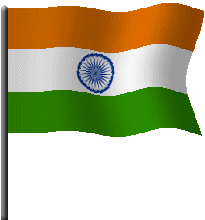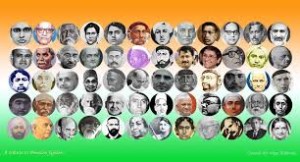Persons – All India Anti Crime Bureau
Netaji Subhash Chandra Bose
Death: Not knownContributions
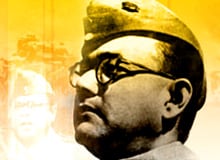 Netaji Subhash Chandra Bose was a freedom fighter of India. He was the founder of the Indian National Army. During pre-independence period Netaji had visited London to discuss the future of India, with the members of the Labor party. His sudden disappearance from Taiwan, led to surfacing of various theories, concerning the possibilities of his survival.Life
Netaji Subhash Chandra Bose was a freedom fighter of India. He was the founder of the Indian National Army. During pre-independence period Netaji had visited London to discuss the future of India, with the members of the Labor party. His sudden disappearance from Taiwan, led to surfacing of various theories, concerning the possibilities of his survival.LifeNetaji Subhash Chandra Bose was born on 23 January, 1897 in Cuttack (Orissa) to Janakinath Bose and Prabhavati Devi. Subhash was the ninth child among eight brothers and six sisters. His father, Janakinath Bose, was an affluent and successful lawyer in Cuttack and received the title of “Rai Bahadur”. He, later became a member of the Bengal Legislative Council.
Subhash Chandra Bose was a very intelligent and sincere student but never had much interest in sports. He passed his B.A. in Philosophy from the Presidency College in Calcutta. He was strongly influenced by Swami Vivekananda’s teachings and was known for his patriotic zeal as a student. He also adored Vivekananda as his spiritual Guru.
British Professor Thrashed
After reading so many incidents about the exploitation of the fellow Indians by the British, Subhash decided to take revenge. In 1916, Subhash reportedly beat and thrashed one of his British teachers E F Otten. The professor made a racist remark against the Indian students. As a result, Bose was expelled from the Presidency College and banished from Calcutta University. The incident brought Subhash in the list of rebel-Indians. In December 1921, Bose was arrested and imprisoned for organizing a boycott of the celebrations to mark the Prince of Wales’s visit to India.
Indian Civil Service
His father wanted Netaji to become a civil servant and therefore, sent him to England to appear for the Indian Civil Service Examination. Bose was placed fourth with highest marks in English. But his urge for participating in the freedom movement was intense that in April 1921, Bose resigned from the coveted Indian Civil Service and came back to India. Soon, he left home to become an active member of India’s independence movement. He, later joined the Indian National Congress, and also elected as the president of the party.
Subhash with Congress
Initially, Subhash Chandra Bose worked under the leadership of Chittaranjan Das, an active member of Congress in Calcutta. It was Chittaranjan Das, who along with Motilal Nehru, left Congress and founded the Swaraj Party in 1922. Subhash would regard Chittaranjan Das as his political guru.
While Chittaranjan Das was busy in developing the national strategy, Subhash Chandra Bose played a major role in enlightening the students, youths and labors of Calcutta. He was eagerly waiting to see India, as an independent, federal and republic nation.
Dispute in the Congress
People began to recognize Bose by his name and associated him with the freedom movement. Bose had emerged as a popular youth leader. He was admired for his great skills in organization development.
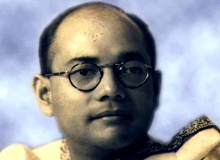 In 1928, during the Guwahati Session of the Congress, a difference in the opinion between the old and new members surfaced. The young leaders, as against the traditional leadership, wanted a “complete self-rule and without any compromise”. The senior leaders were in favor of the “dominion status for India within the British rule”.
In 1928, during the Guwahati Session of the Congress, a difference in the opinion between the old and new members surfaced. The young leaders, as against the traditional leadership, wanted a “complete self-rule and without any compromise”. The senior leaders were in favor of the “dominion status for India within the British rule”.
The differences were between moderate Gandhi and aggressive Subhash Chandra Bose was swelling. The state was so intense that Subhash Chandra Bose had to defeat Pattabhi Sitaramayya, a presidential candidate, nominated by Gandhiji himself. Bose had won the election but without any second thought he resigned from the party. He, then formed the Forward Bloc in 1939.
Formation of INA
During the Second World War in September, 1939, Subhash Chandra Bose decided to initiate a mass movement. He started uniting people from all over the country. There was a tremendous response to his call and the British promptly imprisoned him. In jail, he refused to accept food for around two weeks. When his health condition deteriorated, fearing violent reactions across the country, the authority put him under house-arrest.
During his house-arrest, in January, 1941, Subhash made a planned escape. He first went to Gomoh in Bihar and from there he went on to Peshawar (now, Pakistan). He finally reached Germany and met Hitler. Bose had been living together with his wife Emilie Schenkl in Berlin. In 1943, Bose left for south-east Asia and raised the army. The group was later named by Bose, as the Indian National Army (INA).
Visit to England
During his sojourn to England, he met with the leaders of British Labor Party and political thinkers including Clement Attlee, Arthur Greenwood, Harold Laski, G.D.H. Cole, and Sir Stafford Cripps. Bose also discuss with them about the future of India. It must also be noted that it was during the regime of the Labor Party (1945-1951), with Attlee as the Prime Minister, that India gained independence.
Disappearance
Although it was believed that Netaji Subhash Chandra Bose died in a plane crash, his body was never recovered. There have so many theories been put forward regarding his abrupt desertion. The government of India set up a number of committees to investigate the case and come out with truth.
In May 1956, the Shah Nawaz Committee visited Japan to look into the situation of Bose’s assumed death. Citing their lack of political relations with Taiwan, the Centre, did not seek for the assistance from their government. The reports of Justice Mukherjee Commission, tabled in Parliament on 17 May, 2006 said, “Bose did not die in the plane crash and the ashes at Renkoji temple are not his”. However, the findings were rejected by the government of India.
Bhagat Singh
Passed Away: March 23, 1931Contributions
 Bhagat Singh was among the prominent revolutionaries who shaped the base of a grand national movement. Following his execution, on March 23, 1931, the supporters and followers of Bhagat Singh regarded him as a “Shaheed”, “martyr”.Life
Bhagat Singh was among the prominent revolutionaries who shaped the base of a grand national movement. Following his execution, on March 23, 1931, the supporters and followers of Bhagat Singh regarded him as a “Shaheed”, “martyr”.LifeBhagat Singh was born on 27 September 1907 at Banga in Lyallpur district (now Pakistan) to Kishan Singh and Vidya Vati. From his early childhood, Bhagat Singh was imbued with the family’s spirit of patriotism. At the time of his birth, his father Kishan Singh was in jail. His uncle, Sardar Ajit Singh, was a great freedom fighter and established the Indian Patriots’ Association. He was well-supported by his friend Syed Haidar Raza, in organizing the peasants against the Chenab Canal Colony Bill. Ajit Singh had 22 cases against him and was forced to flee to Iran. Bhagat Singh was considered to be one of the most influential revolutionaries of Indian Nationalist Movement. He became involved with numerous revolutionary organizations.
Kishan Singh enrolled Bhagat Singh in Dayanand Anglo Vedic High School. At a very young age, Bhagat Singh started following Non-Cooperation Movement called by Mahatma Gandhi. Bhagat Singh had openly defied the British and had followed Gandhi’s wishes by burning the government-sponsored books. Following the violent incidents of “Chauri Chaura”, Gandhi called for the withdrawal of the Non-Cooperation movement. Unhappy with the decision, Bhagat Singh, isolated himself from Gandhi’s nonviolent action and joined the Young Revolutionary Movement.
He was pursuing B.A. examination when his parents planned to have him married. He vehemently rejected the suggestion and said that, if his marriage was to take place in Slave-India, my bride shall be only death.” Singh later joined the Hindustan Republican Association, a radical group, later known as the Hindustan Socialist Republican Association. He returned to his home in Lahore after assurances from his parents that he would not be compelled to get married. He established contact with the members of the Kirti Kisan Party and started contributing regularly to its magazine, the “Kirti”. In March 1926, the Naujawan Bharat Sabha was formed with Bhagat Singh, as its secretary.
On 30 October 1928, an all-parties procession, led by Lala Lajpat Rai, marched towards the Lahore railway station to protest against the arrival of the Simon Commission. Stopping the procession, police made a lathi charge at the activists. The confrontation left Lala Lajpat Rai with severe injuries and also led to his death. As an avenge to the death of Lala Lajpat Rai, Bhagat Singh and his associates plotted the assassination of Scott, the Superintendent of Police, believed to have ordered the lathi charge. The revolutionaries, mistaking J.P. Saunders, an Assistant Superintendent of Police, as Scott, killed him instead. Bhagat Singh quickly left Lahore to escape his arrest. To avoid recognition, he shaved his beard and cut his hair, a violation of the sacred tenets of Sikhism.
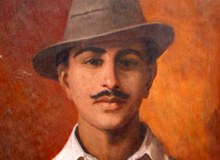
In response to the formulation of Defence of India Act, the Hindustan Socialist Republican Association planned to explode a bomb inside the assembly premises, where the ordinance was going to be passed. On April 8 1929 Bhagat Singh and Batukeshwar Dutt threw a bomb onto the corridors of the assembly and shouted ‘Inquilab Zindabad!’ The bomb was not meant to kill or injure anyone and therefore it was thrown away from the crowded place. Following the blasts both Bhagat Singh and Batukeshwar Dutt courted arrest
Trial and Death
The British authority, while interrogating them, came to know about their involvement in the murder of J. P. Saunders. Bhagat Singh, Rajguru, and Sukhdev were charged with the murder. Singh admitted to the murder and made statements against the British rule during the trial.
While in jail, Bhagat Singh found that the authorities were following a dual policy in treating the prisoners. The criminals of foreign origin were treated better than Indian political prisoners. As a protest, he along with some fellow prisoners declared to “go on hunger strike”. The strike continued for over a month and finally the British had to accept before their conditions.
Bhagat Singh along with other revolutionaries found responsible for the Assembly bombing and murder of Saunders. On March 23, 1931, Bhagat Singh was hanged in Lahore with his fellow comrades Rajguru and Sukhdev. Singh was cremated at Hussainiwala on banks of Sutlej river.
Chandrasekhar Azad
Passed Away: February 27, 1931Contributions
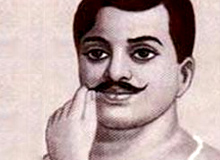 A contemporary of Bhagat Singh, Chandrasekhar Azad was a born firebrand revolutionary. He engaged in a heroic battle against the British. His role was crucial in inspiring the others of his generation to participate in the national movement for freedom.Life
A contemporary of Bhagat Singh, Chandrasekhar Azad was a born firebrand revolutionary. He engaged in a heroic battle against the British. His role was crucial in inspiring the others of his generation to participate in the national movement for freedom.LifeChandrasekhar Azad was born to Pandit Sita Ram Tiwari and Jagrani Devi on July 23, 1906 in Badarka (Unnao). His original name was Chandrasekhar Tiwari.
He received his early schooling in Bhavra District in Jhabua, Madhya Pradesh. For higher studies he went to the Sanskrit Pathashala at Varanasi. Chandrashekhar was deeply troubled by the Jalianwalabagh massacre in Amritsar in 1919. Azad, at an age of 15, got involved in the revolutionary activities. He was caught by the British police while participating in the non-cooperation movement and sentenced to. whiplashes as punishment. When the magistrate asked him his name, he said “Azad” (independence). From that point onwards, Chandrashekhar assumed the title of Azad and came to be known as Chandrashekhar Azad.
Following the Chauri-Chaura incident, in which police stations were vandalized and burnt by the activists, Mahatma Gandhi called for the suspension of the non-cooperation movement. Azad, along with Bhagat Singh distanced themselves from the paths of Gandhi. They were more attracted by the aggressive and violent revolutionary ideals and means. Towards this end, they formed the Hindustan Socialist Republican Association and trained the revolutionaries like Bhagat Singh, Sukhdev, Batukeshwar Dutt, and Rajguru. Azad was instrumental in carrying out numerous acts of violence. This includes the Kakori Train Robbery in 1926, assassination of John Poyantz Saunders in 1928 at Lahore to avenge the killing of Lala Lajpat Rai.
How important his role was in the freedom struggle of India can be understood by the fact that the British police badly wanted to nab him dead or alive. On February 27, 1931 Chandrashekhar Azad while meeting with friends at Alfred Park, Allahabad, and the police surrounded the park and asked Chandrashekhar Azad to surrender. Azad fought alone and valiantly and killed three policemen but after nearly exhausting his ammunition and foreseeing no means of escape, he shot himself in the head with his last bullet. He was reportedly betrayed by an informer.
After the independence, to commemorate Chandrashekhar Azad, Alfred Park was renamed Chandrashekhar Azad Park. The patriotism of Azad, Rajguru, Pandit Ram Prasad Basil and Ashfaqula Khan was depicted in Rang De Besant, a contemporary Bollywood film starring Aimer Khan that was released in February 2006.
Sardar Vallabhbhai Patel
Passed Away: 15 December 1950Contributions
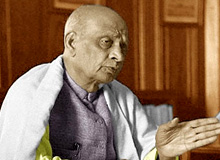 Vallabhbhai Patel was one of the great social leaders of India. He played a crucial role during the freedom struggle of India and was instrumental in the integration of over 500 princely states into the Indian Union. Despite the choice of the people, on the request of Mahatma Gandhi, Sardar Patel stepped down from the candidacy of Congress president. The election on that occasion eventually meant for the election of the first Prime Minister of independent India.Life
Vallabhbhai Patel was one of the great social leaders of India. He played a crucial role during the freedom struggle of India and was instrumental in the integration of over 500 princely states into the Indian Union. Despite the choice of the people, on the request of Mahatma Gandhi, Sardar Patel stepped down from the candidacy of Congress president. The election on that occasion eventually meant for the election of the first Prime Minister of independent India.LifeVallabhbhai Patel was born on October 31, 1875 in Gujarat to Zaverbhai and Ladbai. Vallabhbhai, His father had served in the army of the Queen of Jhansi while his mother was a very spiritual man.
Starting his academic career in a Gujarati medium school Sardar Vallabhbhai Patel and shifted to an English medium school. In 1897, Vallabhbhai passed his high school examination and started preparing for law examination. 1910, Sardar Vallabhbhai Patel went to England to study law. He completed his law studies in 1913 and came back to India and started his law practice. For his Excellencies in Law, Vallabhbhai was offered many lucrative posts by the British Government but he rejected all. He was a staunch opponent of the British government and its laws and therefore decided not to work for the British.
He later started practicing at Ahmedabad. After a meeting with Mahatma Gandhi, at the Gujarat Club, Sardar Vallabhbhai Patel got influenced by Gandhi’s words. Later, inspired by Gandhi’s work and philosophy Patel became a staunch follower of him.
Indian National Movement
In 1917, Sardar Vallabhbhai was elected as the Secretary of the Gujarat Sabha. The next year, when there was a flood in Kaira, the British insisted on collecting tax from the farmers. Sardar Vallabhbhai led a massive “No Tax campaign” that urged the farmers not to pay their land. The peaceful movement forced the British authority to return then land taken away from the farmers His effort to bring together the farmers of his area brought him the title of ‘Sardar’ to his name.
In 1928, the farmers of Bardoli faced a similar problem of “tax-hike”. After prolonged summons, when the farmers refused to pay the extra tax, the government in retaliation seized their lands. Vallabhbhai Patel. The agitation took on for more than six months and after a deal struck between the government and farmer’s representatives, the lands were returned.
In 1930 Sardar Vallabhbhai Patel was imprisoned for participating in the famous Salt Satyagraha called by Mahatma Gandhi. His inspiring speeches during the “Salt Movement” transformed the lives of numerous people, who later played a major role in making the movement successful.
Sardar Patel was freed in 1931 following an agreement signed between Mahatma Gandhi and Lord Irwin, the then Viceroy of India. The treaty was popularly known as the Gandhi-Irwin pact. The same year, Patel was elected as the president of Indian National Congress Party for its Karachi session.
In the Karachi session, the Indian National Congress Party committed itself to the defence of fundamental rights and human rights and a dream of a secular nation. An agreement regarding this was also sanctioned.
In 1934, Sardar Vallabhbhai Patel led the all-India election campaign for the Indian National Congress. Though he did not contest a seat for himself, Sardar Patel helped his fellow party mates during the election.
Sardar Patel was annoyed at Jawaharlal Nehru for the latter’s declarations of the adoption of socialism in 1936. Patel also considered Netaji Subhash Chandra Bose a “keen of more power within the party.
Influence of Gandhi
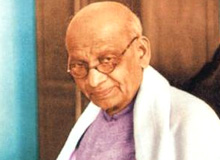 While senior leaders including Jawaharlal Nehru, Chakravarthi Rajagopalachari and Maulana Azad criticized Mahatma Gandhi’s concept that the civil disobedience movement would compel the British to leave the nation, Patel extended his support to Gandhi. Despite the unwillingness of the Congress High Command, Mahatma Gandhi and Sardar Vallabhbhai Patel strongly forced the All India Congress Committee to ratify the civil disobedience movement and launch it without delaying further. Acting under the pressure, the All India Congress Committee sanctioned the drive on 7 August 1942.
While senior leaders including Jawaharlal Nehru, Chakravarthi Rajagopalachari and Maulana Azad criticized Mahatma Gandhi’s concept that the civil disobedience movement would compel the British to leave the nation, Patel extended his support to Gandhi. Despite the unwillingness of the Congress High Command, Mahatma Gandhi and Sardar Vallabhbhai Patel strongly forced the All India Congress Committee to ratify the civil disobedience movement and launch it without delaying further. Acting under the pressure, the All India Congress Committee sanctioned the drive on 7 August 1942.
One important episode that could change the political lines of the country had shaped up just a year of attaining independence. During the election for the Congress presidency in 1946, thirteen of the sixteen states proposed Sardar Patel’s name for the post. It was a very crucial election, as the elected president of the congress party would be later considered as the first Prime Minister of independent India. Just a few days, before the all important election, Mahatma Gandhi request Sardar Patel to leave the candidacy and support Jawaharlal Nehru. Sardar Patel, without pondering twice, stepped down.
Integration of princely states
At the time of independence, Indian territory was divided into three parts. First, the territories under the direct control of the British government, second were the territories over which the hereditary rulers had suzerainty. The regions, which had been colonized by France and Portugal, formed the last. India, without the integration of these different territories under one roof, could not be considered as a unified and total country. It was a stupendous task for the ruling party, to persuade the rulers of these states to join. According to British government, the province rulers had the liberty to choose how they wanted to be ruled. They were given two choices. They could join either of India and Pakistan or stay independently. The stance of the British government had made the task much difficult for India. At this point many leaders of the congress approached the rulers but they failed to convince. At last, they all made a request Vallabhbhai Patel to think some other options to bring the princely rulers under Indian control. Sardar Patel eventually dealt with the tough-situation and came out successfully. He had made secured their accession. Therefore, the state of India we see today was a result of the efforts put in by Sardar Vallabhbhai Patel.
Death
Sardar Vallabhbhai Patel’s health declined in 1950. He, himself realized that he was not going to live much longer. On 2 November his health deteriorated further and was confined to bed. After suffering a massive heart attack, on 15 December 1950, the great soul left the world.
Maulana Abul Kalam Azad
Died: February 22, 1958Contributions
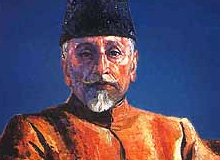 Maulana Abul Kalam Azad was a renowned journalist of his time. Disturbed by his provocative articles, the British Government decided to deport him off Calcutta. Despite of his house-arrest and imprisonment, Maulana Abul Kalam Azad continued to write against the anti-people policies of the British Government. He was elected as Congress President in 1923 and 1940. Despite being a Muslim, Azad often stood against the policies of the prominent Muslims leaders like Muhammad Ali Jinnah. Azad was the first education minister of independent India. On February 22, 1958 Maulana Abul Kalam Azad passed away. Maulana Abul Kalam Azad was posthumously awarded, Bharat Ratna, India’s highest civilian honor, in 1992.Life
Maulana Abul Kalam Azad was a renowned journalist of his time. Disturbed by his provocative articles, the British Government decided to deport him off Calcutta. Despite of his house-arrest and imprisonment, Maulana Abul Kalam Azad continued to write against the anti-people policies of the British Government. He was elected as Congress President in 1923 and 1940. Despite being a Muslim, Azad often stood against the policies of the prominent Muslims leaders like Muhammad Ali Jinnah. Azad was the first education minister of independent India. On February 22, 1958 Maulana Abul Kalam Azad passed away. Maulana Abul Kalam Azad was posthumously awarded, Bharat Ratna, India’s highest civilian honor, in 1992.LifeMaulana Abul Kalam Azad was born on November 11, 1888 in Mecca, Islam’s main center of pilgrimage. His forefather’s came to India during the reign of Mughal Emperor Babar, from Heart, Afghanistan. Azads were the descendent of eminent Ulama or scholars of Islam religion. His mother was the daughter of a rich Arabian Sheikh and his father, Maulana Khairuddin, was a Bengali Muslim of Afghan origins. Khairuddin left India during the 1857 Sepoy Mutiny (Indian rebellion of 1857) and settled in Mecca, where he met his wife. In 1890, He, along with family, returned to Calcutta (now Kolkata).
Maulana Abul Kalam Azad’s real name was Abul Kalam Ghulam Muhiyuddin. Maulana Azad had his initial formal education in Arabic, Persian and Urdu with theological orientation and then philosophy, geometry, mathematics and algebra. He also learnt English language, world history, and politics on his own. Maulana Azad had a natural inclination towards writing and this resulted in the great start of the monthly magazine “Nairang-e-Alam” in 1899. He was eleven years old when his mother passed away. Two years later, at the age of thirteen, Azad was married to young Zuleikha Begum.
After his return to India from an extensive visit of Egypt, Turkey, Syria and France Azad met prominent Hindu revolutionaries Sri Aurobindo Ghosh and Shyam Sundar Chakraborty. They helped in developing radical political views and he began to participate in the Indian nationalist movement. Azad fiercely criticized the Muslim politicians who were more inclined towards the communal issues without focusing on the national interest. He also rejected the theories of communal separatism advocated by the All India Muslim League.
In Egypt, Azad came into contact with the followers of Mustafa Kemal Pasha who were publishing a weekly from Cairo. In Turkey, Maulana Azad met the leaders of the Young Turks Movement. Azad, inspired by the works and commitment foreign leaders, published a weekly, called “Al-Hilal” in 1912. The weekly was taken as a platform to attack the policies of British Government and highlight the problems faced by the common Indians. The paper became so popular that its circulation figures went up to 26,000 copies. The unique message of patriotism and nationalism blended with religious commitment gained its acceptance among the masses. But these developments disturbed the British Government and in 1914, the British Government put a ban on the weekly. Unfazed by the move, Maulana Azad, few months later, launched a new weekly, called “Al-Balagh”. Failed to put a prohibition on the writings of Maulana Azad, the British Government then, finally decided to deport him off Calcutta in 1916. When Maulana Azad reached Bihar, he was arrested and put under house arrest. This detention continued till December 31, 1919. After his release on January 1, 1920, Azad returned to the political atmosphere and actively participated in the movement. In fact, he continued to write provocative articles against the British Government.
The implementation of the Rowlatt Act in 1919 added fuel to the fire and raised the intensity of the participation of common people in the nationalist movement. Consequently, thousands of political activists had been arrested and many publications were banned.
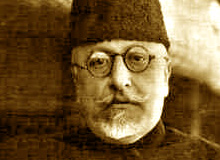
In the Congress
While extending his support to Mahatma Gandhi and non-cooperation movement, Maulana Azad joined the Indian National Congress in January 1920. He presided over the special session of Congress in September 1923 and was said to be the youngest man elected as the President of the Congress.
Maulana Azad emerged as an important national leader of the Indian National Congress Party. He also served as the member of Congress Working Committee (CWC) and in the offices of general secretary and president for numerous occasions. In 1928, Maulana Azad endorsed the Nehru Report, formulated by Motilal Nehru. Interestingly, the Motilal Nehru Report was severely criticized by number of Muslim personalities involved with the freedom movement. As opposed to Muhammad Ali Jinnah, Azad also advocated for the ending of separate electorates based on religion and called for a single nation committed to secularism. In 1930, Maulana Azad was arrested for violation of the salt laws as part of Gandhiji’s Salt Satyagraha. He was put in Meerut jail for a year and a half.
Post Independence
During the violence that erupted following partition of India, Maulana Azad assured to take up the responsibility for the security of Muslims in India. Towards this, Azad toured the violence-affected regions of borders of Bengal, Assam, Punjab. He helped in establishing the refugee camps and ensured uninterrupted supply of food and other basic materials. It was reported that in the crucial Cabinet meetings both Sardar Vallabhbhai Patel and Maulana Azad clashed over the security measures in Delhi and Punjab.
The role and contribution of Maulana Abul Kalam Azad could not be overlooked. He was appointed as India’s first Minister for Education and inducted in the Constituent Assembly to draft India’s constitution. Under Maulana Azad’s tenure, a number of measures were undertaken to promote primary and secondary education, scientific education, establishment of universities and promotion of avenues of research and higher studies.
Death
On February 22, 1958 Maulana Abul Kalam Azad, one of the foremost leaders of Indian freedom struggle passed away. For his invaluable contribution to the nation, Maulana Abul Kalam Azad was posthumously awarded India’s highest civilian honor, Bharat Ratna in 1992.
Lala Lajpat Rai
Died: October 30, 1928Contributions
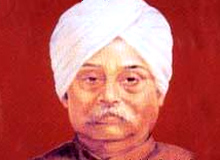 Lala Lajpat Rai immensely contributed in attaining independence the nation. He helped in establishing few schools in the country. He also initiated the foundation of Punjab National Bank. In 1897, he founded the Hindu Orphan Relief Movement to keep the Christian missions from securing custody of these children. He died after the police lathi-charged on the activists, protesting the arrival of Simon Commission.Life
Lala Lajpat Rai immensely contributed in attaining independence the nation. He helped in establishing few schools in the country. He also initiated the foundation of Punjab National Bank. In 1897, he founded the Hindu Orphan Relief Movement to keep the Christian missions from securing custody of these children. He died after the police lathi-charged on the activists, protesting the arrival of Simon Commission.LifeLala Lajpat Rai was born on January 28, 1865 to Munshi Radha Krishna Azad and Gulab Devi at Dhudike village in Ferozpur District. His father was a great scholar of Persian and Urdu while his mother was a strict religious lady and inculcated in her children strong morals values. His family values allowed Lajpat Rai, the freedom of having different faiths and beliefs.
Lajpatrai received his elementary education in the school where his father was posted as teacher. Lajpat Rai joined the Government College at Lahore in 1880 to study Law. While in college he came in contact with patriots and future freedom fighters like Lala Hans Raj and Pandit Guru Dutt. He studied law from Government College in Lahore and thereafter started his legal practice in Hissar, Haryana. Since childhood he had a desire to serve his country and therefore took a pledge to free it from foreign rule. In 1884 his father was transferred to Rohtak and Lala Lajpat Rai came along.
In 1886 the family shifted to Hissar, where he practiced law. There, Lajpat Rai helped to establish the nationalistic Dayanand Anglo-Vedic School and became a follower of Dayanand Saraswati. In 1888 and 1889 he was a delegate to the annual sessions of the National Congress. He moved to Lahore to practice before the High Court in 1892.
In 1895 Rai helped found the Punjab National Bank, demonstrating his concern for self-help and enterprise. In 1897 he founded the Hindu Orphan Relief Movement to keep the Christian missions from securing custody of these children. In the National Congress in 1900 he stressed the importance of constructive, nation-building activity and programs for self-reliance.
Gradually, Lajpat Rai had curtailed his legal practice and was concentrating all his efforts to free the nation from British. In October 1917, he founded the Indian Home Rule League of America in New York.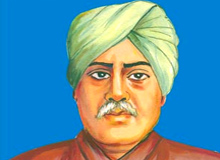
In 1920, after his return from America, Lajpat Rai was invited to preside over the special session of the Congress in Calcutta, (now Kolkata). He plunged into the non-cooperation movement, which was being launched in response to the Rowlatt Act, in principle. The movement was led by Lajpat Rai’s in Punjab and he soon came to be known as “Punjab Kesri” (The Lion of Punjab).
Author
Besides, a great freedom fighter and leader, Lala Lajpat Rai was also a noted writer. The United States of America: A Hindu’s impressions and a study, History of the Arya Samaj, Swaraj and social change, England’s Debt to India: India, The Problems Of National Education In India were among the books, he had written.
Death
On October 30, 1928 to boycott the arrival of the members of the Simon Commission in Lahore, a peaceful procession, headed by Lajpat Rai was launched. Intercepting the march, Superintendent of Police, Scott ordered his police force to ‘lathi-charge’ at the activists. The police targeted Lajpat Rai, in particular, and hit him on the chest. The confrontation left Lala Lajpat Rai with severe injuries and also led to his death. To take avenge to the death of Lala Lajpat Rai, Bhagat Singh and his associates plotted the assassination of Scott. But, the revolutionaries, mistaking J.P. Saunders, an Assistant Superintendent of Police, as Scott, killed him instead.
Lal Bahadur Shastri
Passed Away: 11 January 1966Contributions
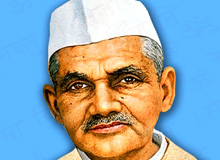 He devoted his life for the pride and honor of the country. Shastri was regarded as man of principles. Lal Bahadur Shastri offered his resignation as Union Railway Minister; hours after he was made aware of a train accident that killed around 150 people. He laid the foundation stones of the well-productive schemes like Green Revolutions and White Revolutions. He was the first person to be posthumously awarded the “Bharat Ratna”.Life
He devoted his life for the pride and honor of the country. Shastri was regarded as man of principles. Lal Bahadur Shastri offered his resignation as Union Railway Minister; hours after he was made aware of a train accident that killed around 150 people. He laid the foundation stones of the well-productive schemes like Green Revolutions and White Revolutions. He was the first person to be posthumously awarded the “Bharat Ratna”.LifeLal Bahadur Shastri was born on October 2, 1904, to Ramdulari Devi and Sharada Prasad Shrivastava, in Moghalsarai, United Province (Uttar Pradesh). He shares his birthday with Mahatma Gandhi, the father of the nation. Lal Bahadur was against the prevailing caste system and therefore decided to drop his surname. The title “Shastri” was given after the completion of his graduation at Kashi Vidyapeeth, Varanasi in 1925. The title “Shastri” refers to a “scholar” or a person, adept in the “Holy Scriptures”.
His father Sharada Prasad, a schoolteacher by profession, passed away when Lal Bahadur was barely two years old. His mother Ramdulari Devi took him and his two sisters to their maternal grandfather Hazari Lal’s house. Lal Bahadur acquired virtues like boldness, love of adventure, patience, self-control, courtesy, and selflessness in his childhood. After completing his primary education at Mirzapur, Lal Bahadur was sent to Varanasi, where he stayed with his maternal uncle.
Young Lal Bahadur, inspired with the stories and speeches of national leaders, developed a desire to participate in the Indian nationalist movement. He would also spend time by reading foreign authors like Marx, Russell and Lenin. In 1915, a speech of Mahatma Gandhi changed the course of his life and decided to jump into the fire of Indian freedom struggle.
In order to participate actively in the freedom movement, Lal Bahadur neglected his studies. In 1921, during the non-cooperation movement, called by Mahatma Gandhi, Lal Bahadur was arrested for demonstrating in defiance of the prohibitory order. Sine he was a minor then, the authority had to release him. In 1928, Lal Bahadur Shastri married Lalita Devi, the youngest daughter of Ganesh Prasad. He was against the prevailing “dowry system” and so refused to accept dowry. However, on the repeated urging of his father-in-law, he agreed to accept only five yards of khadi (cotton, usually handspun) cloth as dowry.
Active Nationalist
In 1930, Lal Bahadur Shastri became the secretary of the Congress party and later the president of the Allahabad Congress Committee. He played a crucial role during the “Salt Movement”. Lal Bahadur lead a door-to-door campaign, urging people not to pay land revenue and taxes to the British authority. The leader was also sent to jail for the campaign. During the long span of nine years he spent in jails, Lal Bahadur utilized the time in reading the social reformers and western philosophers. He was one of the leading and prominent faces that continued the Quit India movement, called by Mahatma Gandhi. Lal Bahadur, in 1937, was elected to the UP Legislative Assembly.
Post Independence
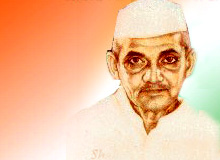 Lal Bahadur Shastri had served in various positions before being elected as the Prime Minister. After Independence, he became the Minister of police in the Ministry of Govind Vallabh Panth in Uttar Pradesh. His recommendations included the introduction of “water-jets” instead of sticks to disperse the unruly mob. Impressed with his efforts in reforming the state police department, Jawaharlal Nehru, invited Shastri to join the Union cabinet as a Minister for railways. He was a responsible man and known for his ethics and morality. In 1956, Lal Bahadur Shastri resigned from his post, following a train accident that killed around 150 passengers near Ariyalur in Tamil Nadu. Nehru, had once said, “No one could wish for a better comrade than Lal Bahadur, a man of the highest integrity and devoted to ideas”.
Lal Bahadur Shastri had served in various positions before being elected as the Prime Minister. After Independence, he became the Minister of police in the Ministry of Govind Vallabh Panth in Uttar Pradesh. His recommendations included the introduction of “water-jets” instead of sticks to disperse the unruly mob. Impressed with his efforts in reforming the state police department, Jawaharlal Nehru, invited Shastri to join the Union cabinet as a Minister for railways. He was a responsible man and known for his ethics and morality. In 1956, Lal Bahadur Shastri resigned from his post, following a train accident that killed around 150 passengers near Ariyalur in Tamil Nadu. Nehru, had once said, “No one could wish for a better comrade than Lal Bahadur, a man of the highest integrity and devoted to ideas”.
Lal Bahadur Shastri returned to the Cabinet in 1957, first as the Minister for Transport and Communications, and then as the Minister of Commerce and Industry. In 1961, he became Minister for Home and formed the “Committee on Prevention of Corruption” headed by of K. Santhanam.
Prime Minister
Jawaharlal Nehru was succeeded by a mild-mannered and soft-spoken Lal Bahadur Shastri on 9 June, 1964. He was a follower of Nehruvian socialism. Despite the strong influence and desire of becoming the Prime Minister, of some party stalwarts Shastri emerged as the consensus candidate.
Shastri tackled many elementary problems like food shortage, unemployment and poverty. To overcome the acute food shortage, Shastri asked the experts to devise a long-term strategy. This was the beginning of famous “Green Revolution”. Apart from the Green Revolution, he was also instrumental in promoting the White Revolution. The National Dairy Development Board was formed in 1965 during Shastri as Prime Minister.
After the Chinese aggression, the major cross-border-problems Shastri faced was caused by Pakistan. It sent her forces across the eastern border into the Rann of Kuch in Gujarat. Shastri showing his mettle, made it very clear that India would not sit and watch. While granting liberty to the Security Forces to retaliate He said, “Force will be met with force”.
The Indo-Pak war ended on 23 September 1965 after the United Nations passed a resolution demanding a ceasefire. The Russian Prime Minister, Kosygin, offered to mediate and on 10 January 1966, Lal Bahadur Shastri and his Pakistan counterpart Ayub Khan signed the Tashkent Declaration.
Death
Lal Bahadur Shastri, who had earlier suffered two heart attacks, died of the third cardiac arrest on 11 January, 1966. He is the only Indian Prime Minister, to have died in office, overseas. Lal Bahadur Shastri was the first person to be posthumously awarded the Bharat Ratna, (India’s highest civilian award).

